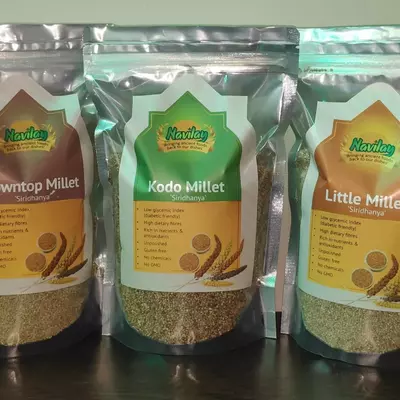Living with diabetes requires careful attention to one’s diet and lifestyle choices. While there are various ways to manage blood sugar levels, incorporating Siridhanya millets into your meals can be a smart and nutritious choice. Siridhanya millets, also known as minor millets, are a group of small-seeded grains that have gained recognition for their health benefits, including their positive impact on diabetes management. In this article, we will delve into the reasons why Siridhanya millets for diabetics, explore some popular varieties, provide delicious recipe ideas, address frequently asked questions, and offer tips for incorporating these grains into your daily diet.
Siridhanya Millets for Diabetics: A Natural Solution
Siridhanya millets, also known as minor millets or traditional millets, are a group of small-seeded grains that have been cultivated for centuries in India. These millets are gaining popularity as a nutritious and healthy alternative to rice and wheat, especially for individuals with diabetes.
Siridhanya millets have long been hailed as a healthy food choice, and their advantages extend to individuals with diabetes. Let’s take a closer look at the benefits they offer:
1. Low Glycemic Index
Siridhanya millets have a low glycemic index (GI), which means they cause a slow and steady rise in blood sugar levels. Unlike refined grains and other high GI foods, Siridhanya millets provide sustained energy and prevent sudden spikes in glucose levels. This makes them an excellent choice for individuals with diabetes who need to maintain stable blood sugar levels.
2. Rich in Fiber
One of the key components of a diabetic-friendly diet is fiber, and Siridhanya millets are abundant in this nutrient. Dietary fiber aids in slowing down the absorption of sugar and promotes a feeling of fullness, which can help with weight management—a crucial aspect of diabetes control. Additionally, the fiber in Siridhanya millets supports healthy digestion and can contribute to improved overall gut health.
3. Packed with Essential Nutrients
Siridhanya millets are a nutritional powerhouse. They are rich in essential vitamins, minerals, and antioxidants that are beneficial for overall well-being. These grains contain important nutrients like magnesium, which plays a role in insulin secretion and glucose metabolism, making it particularly relevant for individuals with diabetes. Other essential nutrients found in Siridhanya millets include iron, zinc, and B vitamins.
Exploring Popular Varieties of Siridhanya Millets
Siridhanya millets come in various types, each with its own distinct characteristics and flavors. Let’s explore some of the most popular varieties and learn about their unique properties:
1. Foxtail Millet
- Overview: Foxtail millet, known for its resemblance to the bushy tail of a fox, is one of the oldest cultivated grains in the world. It has a mild, nutty flavor and a delicate texture.
- Nutritional Highlights: Foxtail millet is an excellent source of dietary fiber, protein, and iron. It is also gluten-free, making it suitable for individuals with celiac disease or gluten intolerance.
- Recipe Idea: Try a refreshing foxtail millet salad with colorful vegetables, herbs, and a tangy lemon dressing for a nutritious and satisfying meal.
2. Kodo Millet
- Overview: Kodo millet is a small grain with a chewy texture and a slightly nutty taste. It is commonly used in South Indian cuisine, especially in dishes like dosas and idlis.

